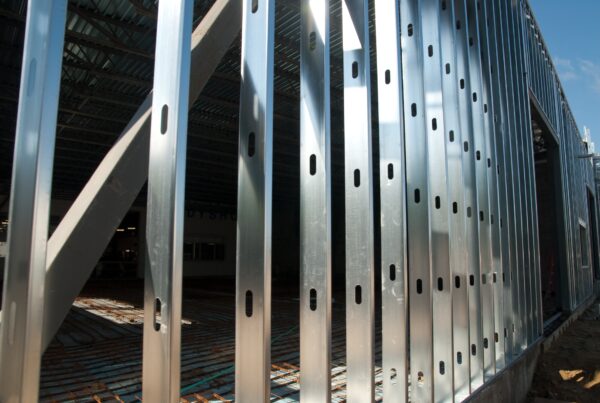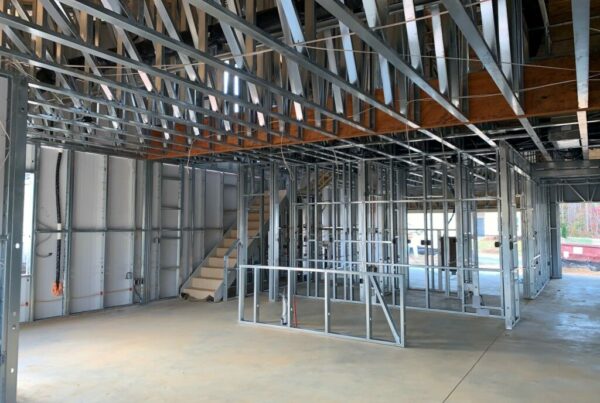New data from Lodging Econometrics shows a 27% growth in hotel development projects entering early planning stages.
Article originally posted at BuildSteel.org

The COVID-19 pandemic put many travel plans on hiatus, especially as coronavirus variants spread across the globe. But work on hotel and resort projects certainly didn’t come to a halt during this disruption.
“While many of us were stuck at home,” says the website, thepointsguy.com, “hotel brands around the world continued to plot their growth for when people could travel again.”
Long-Term, Developers Are Positive
Lodging Econometrics reports that the total U.S. construction pipeline stood at 4,837 hotel development projects in the third quarter of 2021 — more than half a million new rooms are in the works.
- The Q3 pipeline represents a total 592,259 hotel rooms in development, down 10% by rooms year over year
- Project numbers increased slightly over second quarter totals
“Overall, the construction pipeline remains largely muted,” Lodging Econometrics analysts said, “due to a reduced inflow of new projects in the pipeline as compared to ‘pre-COVID levels.’”
Lodging Econometrics analysts noted that the prolonged effects of the pandemic, above average inflation, rising interest rates and material shortages and price increases will continue to be key factors in decision-making for developers going forward.
But, LE analysts also noted that many developers have a long-term positive outlook on hotel development, citing a significant rise in projects in the early planning stages.
Early planning stage hotel development projects (1,978 total) are up 27% year over year
While inflation in construction inputs and problems sourcing of labor and materials have increased, “developers are reworking budgets, revising plans to minimize costs, and adjusting construction start and project opening dates to endure the challenges of a recovering industry,” LE analysts said.
Several major cities have many hotels in their project pipelines. As of Q3, the figures for these cities include, according to The PointGuys:
- Dallas: 147 projects/17,711 rooms
- Atlanta: 139 projects/8,659 rooms
- Los Angeles: 133 projects/22,145 rooms
- New York City: 130 projects/22,417 rooms
- Houston: 90 projects/9,225
LE analysts said these five cities together represent 13% of projects and 15% of rooms in the total U.S. pipeline. The Dallas Morning News said Dallas leads the nation in new hotel projects.
In the U.S., Marriott leads the way with 1,286 projects/166,174 rooms, followed by Hilton with 1,223 projects/139,742 rooms and IHG with 769 projects/77,558 rooms. The three companies together represent 68% of all hotel projects in the U.S. construction pipeline, according to thepointsguy.com.
In the mid-market, limited-service lodging category, 20% of the total construction pipeline is comprised of Home2 Suites by Hilton has 402 projects/41,846 rooms, Holiday Inn Express has 301 projects/28,852 rooms and Fairfield Inn has 246 projects/23,653 rooms.
Hyatt has 98 hotels in the U.S. pipeline, according to the brand’s development page.
The Steel Framing Advantage
Cold-formed steel (CFS) leads the way as the preferred framing material for many structures for multiple reasons.
CFS is:
- A pre-engineered material that can be cut to exact lengths
- Dimensionally stable and does not expand or contract with changes in moisture content
- Lightweight compared to wood and concrete
- Resilient and will not warp, split, crack or creep when exposed to the elements
- Sustainable and 100% recyclable
- Durable and has a high tensile strength
- Non-combustible and is a safeguard against fire accidents
Steel Framing and Hotels Go Together
Cold-formed steel (CFS) is gaining traction as the preferred framing material for many hotel projects because it is (1) lightweight and (2) non-combustible.
Lightweight
An engineering achievement recently occurred in Chicago. There, the Navy Pier’s first hotel is now open for business. The 233-room Sable was added to the pier using CFS floor joists and structural framing for the hotel’s top 5-floors.
The CFS framing helped to reduce the weight on the historic pier.
Crews used light-gauge, CFS bearing walls and a floor joist system designed to spread the weight on the pier, beneath which 51 micropiles were driven into two feet of bedrock.
Non-Combustible
According to Insurance Journal, many insurance carriers are tightening their stance on the construction industry. Contractors need to be concerned about increased insurance premiums caused by more strict underwriting guidelines, but also their existing policies may be in jeopardy.
Non-combustible structures built with CFS framing have a better loss history than combustible wood framing. This translates into lower costs and broader overages for many types of construction insurance. The US Assure Builders Risk Plan, insured by Zurich, automatically offers low non-combustible rates on CFS.
As an example, the Holiday Inn Express in Hearne, Texas, achieved significant savings with CFS due to reduced construction, risk and property insurance premiums. The hotel’s property insurance premiums dropped since, compared to wood, CFS is non-combustible. Steel simply does not burn and never contributes to the spread or intensity of a fire, resulting in lower insurance costs.
Ideal for Repeatable, Speedy Construction
According to Dodge Data & Analytics, contractors are increasing their use of prefabrication and modular construction techniques in the commercial sector:
- 25% invested in prefabricated projects (will increase to 33% in next 3 years)
- 17% bid using modular techniques (wil increase to 21% in next 3 years)
- $68 billion value of modular construction in 2019 (will reach $106 billion by 2027)
Improved productivity, improved quality, increased schedule certainty and reduced waste are just a few benefits of prefabrication and modular construction, says Construction Executive.
A growing number of building professionals are embracing prefabrication and modular construction to provide owners with schedule and budget certainty earlier in the process.
Using CFS framing, contractors are finding ways to build sustainable structures more efficiently, in less time and with lower costs.





